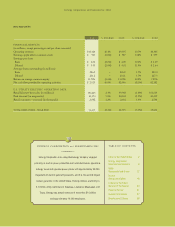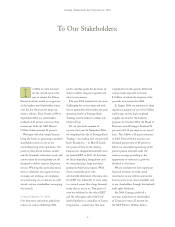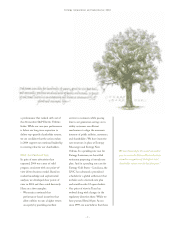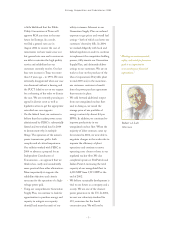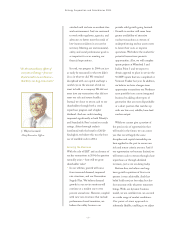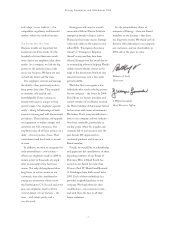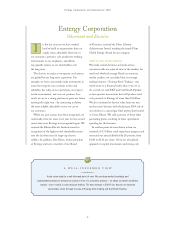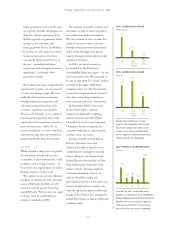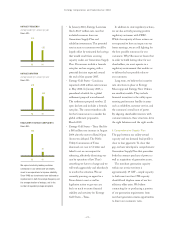Entergy 2004 Annual Report Download - page 7
Download and view the complete annual report
Please find page 7 of the 2004 Entergy annual report below. You can navigate through the pages in the report by either clicking on the pages listed below, or by using the keyword search tool below to find specific information within the annual report.
-5-
Entergy Corporation and Subsidiaries 2004
Robertv.d. Luft
Chairman
is little likelihood that the Public
Utility Commission of Texas will
approve ROA any time in the near
future for Entergy. As a result,
we filed a general rate case in
August 2004 to recover the cost of
investments we have made since our
last general rate case and to ensure we
are able to maintain the high quality
service and reliability that our
customers currently receive. Our last
base rate increase in Texas was more
than 13 years ago – in 1991. We were
extremely disappointed when our case
was dismissed without a hearing and
the PUCT failed to act onour request
for a rehearing of the order to dismiss
the case. We are currently pursuing an
appeal in district court as well as
legislativeactionto get the appropriate
rate relief our case supports.
•On the federal front, we continue to
believe that the market power screen
administered by FERCis substantially
flawed and we worked hard in 2004
to demonstrate why in multiple
filings. The operation of the nation’s
power transmission grid is both
complex and of critical importance.
Our utilities worked with FERC in
2004 to advance a proposal for an
Independent Coordinator of
Transmission – an approach that we
think is less costly and considerably
morepractical than other alternatives.
Moreimportantly it supports the
reliability objectives and criteria
necessaryfor the operationof a high-
voltage power grid.
•Using our comprehensive Generation
Supply Plan, we continue to look for
opportunities to purchase energy and
capacity to mitigate our capacity
shortfalland meet the needs of our
utility customers. Inherent in our
Generation Supply Plan are reduced
exposure to gas prices and overall fuel
savings – both of which can lower our
customers’ electricity bills. In 2004,
we worked diligently with local and
federal regulators in order to continue
to implement the competitive bidding
process, fully execute our Generation
Supply Plan, and ultimately deliver
savings to our customers. We are on
track to close on the purchase of the
Cleco Corporation’s Perryville plant
in mid-2005 and, in the meantime,
our customers continue to benefit
fromthe power purchase agreement
that remains in place.
•Wesold forward additional output
from our unregulated nuclear fleet
and, in doing so, we raised the
average price of our portfolio of
energy contracts by almost $4 per
MWh. In addition, we continued to
improveproductivityin our
unregulated nuclear fleet. When the
majority of labor contracts came up
for renewal in 2004, we were able to
negotiate changes in the work rules to
improve the efficiency of plant
operations and continue to move
operating costs closer to those in our
regulated nuclear fleet. We also
completed uprates at FitzPatrick and
Indian Point 2, increasing the total
capacityof our unregulated fleet to
4,058 MW from3,955 MW at the
end of 2002.
•Webelievesustainable development is
vital to our future as a company and a
society. We are one of the cleanest
power generators in the U.S. In 2004,
we met our voluntary standard for
CO2emissions for the fourth
consecutive year. We will not be
“Meeting our environmental,
safety, and social performance
goals is as important to
us as meeting our financial
expectations.”


